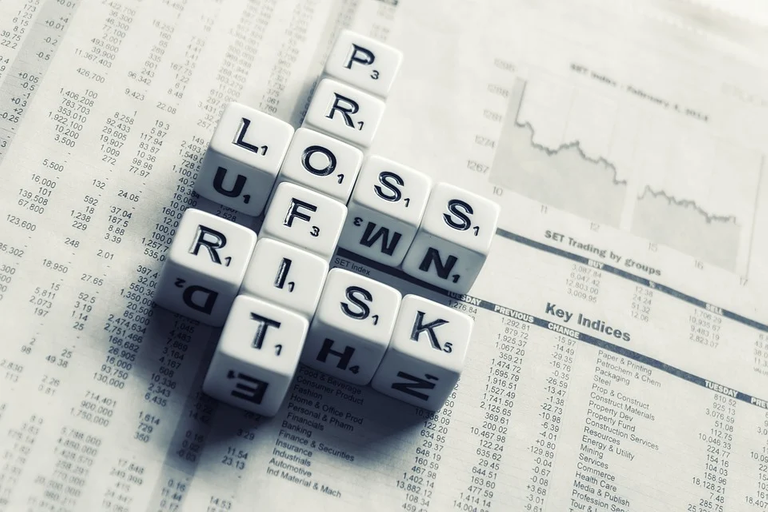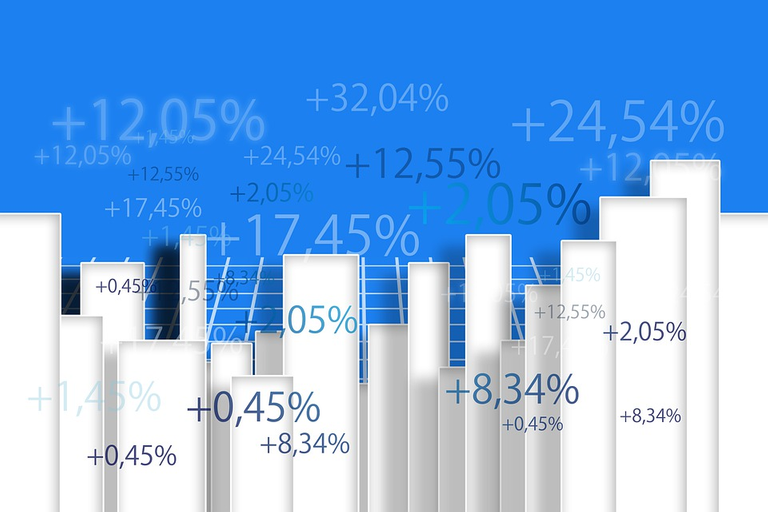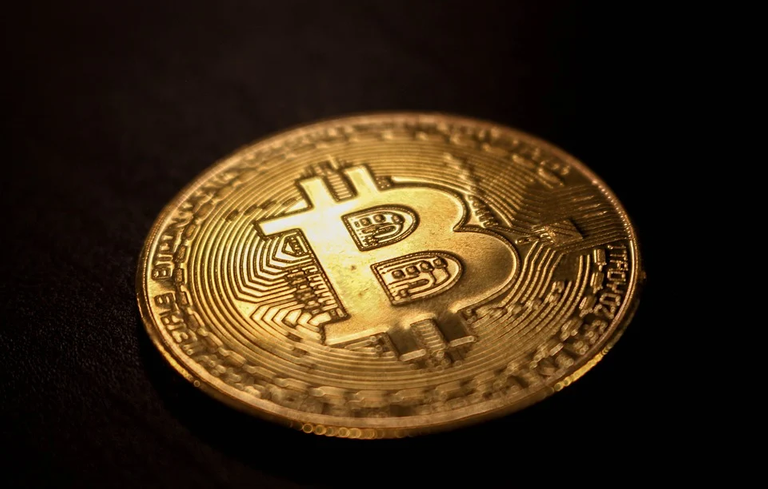When trading and investing on the markets our economic capital is one of the most important things, because it truly is the basis that allows us to carry out our actions respectively, and allowing us to obtain profits. Therefore, our capital in this sense whether it refers to fiat money, or a stablecoin, or even an altcoin, determine the liquidity we have for trading and investments.

Image Source
Therefore, our capital, whether it refers to fiat money, or a , or even an altcoin, constitutes the liquidity we have for trading and investments.
Capital management, risk management and liquidity level
Whether we are operating or investing in the cryptocurrency market (or even in conventional assets and markets, such as commodities, currencies, stocks, etc.), the level of liquidity we have is truly important, because it will determine the range or size of the investments. and investments we can make respectively.
In this sense, the level of liquidity that we have, both in the markets and outside them, is given by the amount of money that supports us to make any investment, expense or financial operation.
Yes, I'm talking about expeses here, because, is also important to talk about it. Because, regarding expenses, we can say that, on a personal level, we all have personal living expenses; and that means money that we must allocate for things such as food, rent, clothing, medicines, transportation, entertainment, utility payments , children's education, aesthetics, etc.
So, even before launching to make investments or trade in the markets (in the event that we have decided to do so), we must carry out proper management of our money, and said management consists of dividing our capital to efficiently manage our level of liquidity without compromising our personal lifestyle in the process. From the division of our capital, we will then allocate a part for investment and another for our expenses.
The percentage to allocate for expenses and for investment or trading in the markets must be decided by each person for themselves, because everyone knows exactly the level of personal expenses they own and what they really want to risk, or can risk or should risk in the markets respectively. A good example of what the initial management of our capital can be, could be 30% and 70% (30% for personal expenses and 70% for investment), or 50% and 50%.

Image Source
In my particular case, I usually allocate 45% for expenses and contingencies, and 55% I leave as investment or trading capital. But I am not saying it as a recommendation for anyone, first of all, because everyone must decide how they manage their money when investing and trading in the markets, and secondly, because the percentage that is most advisable to allocate both for expenses , as for trading and investment, it can be said that it is determined by the total size of the capital that we have in that sense.
Because, logically, the initial capital management that we can do if we have $10,000 is not the same as if we have $100,000; and on the same way, it is not the same to own $1,000,000 than to own $10,000,000. In each case, the size determines the level of liquidity that we have, so if I have little capital, the greater the percentage that I will have to leave for personal expenses (proportionally speaking, of course). But if I have medium or large capital, I will be able to allocate a smaller percentage for personal expenses, and I will even be able to better manage the rest of my capital available for trading and investments.
Going back to the previous example; Someone who owns $10,000 could very well manage their capital in such a way that 50% is to cover their personal expenses, while the other 50% is carry out their trading and investment activities.
But in the case of someone who owns $100,000, things change, because they could well decide to allocate only 30% for their personal expenses, while leaving the rest (70%) for trading and investment purposes.
Risk Management
Now, risk management can be understood as what we do after our initial management of our capital. Let me explain, suppose I have $150,000 and for trading and investment purposes I decided to leave 75% of that capital (the other 25% was left for personal and unforeseen expenses).
Now, that 75% (which speaking in figures is $112,500) I must submit to risk management. In this risk management, I must once again manage my capital, in order to:
1- Do not to risk excessively and unnecessarily in the markets
Because we should never enter on the market with 100% of our investment and trading capital, that is, in the example case I should never fully risk my $112,500 in operations and trading, no matter how sure I think I am of my decisions, because the financial and crypto markets are risky, and for the same reason, we should never be overexposed in this sense.
2- Manage the liquidity I have to invest and trade
Because always is advisable have liquidity available to go long or short at the right times, as this will better allow me to take advantage of the best opportunities whenever they arise, and this is true both in trading and in investments.
3- Being able to diversify my investment portfolio
Because I will always need a certain level of liquidity in order to be able to diversify my investment portfolio when possible. Because as they well say: "You should never put all your eggs in one basket", and this is because if you do, and at some point the basket falls, then you will lose all your eggs at once.

Image Source
Doing risk management wisely is the biggest challenge
The biggest challenge that those of us who trade and invest (especially in the crypto market) have is to manage risk properly; because (technically) there is nothing written exactly about the best way to do this.
I mean, once we have already separated from our capital what we need allocate for the purposes of our personal liquidity (for personal and unforeseen expenses); what remains available for trading and investments is technically 100% of our capital to risk in the markets and that is when we must decide what to do so as not to overexpose ourselves in them, without stopping trading and investing and without totally losing the liquidity to carry out other trading and/or investment operations.
To put it in perspective, let's say I have $100,000 in USDT, and then I do the initial management of my capital in such a way that 30% (30,000) goes to personal and incidental expenses, while 70% ($70,000) goes to trading and investment purposes.
So that $70,000 is now 100% of my trading and investment capital. But now I need to separate the percentage of what I am actually going to invest, and what I am going to leave for diversification and liquidity purposes for new opportunities.

Image Source
So let's say in such a case I see Bitcoin at a great price to buy, so I decide to put 10% of that $70,000 into a buy order (i.e. $7,000). That means that for the purposes of everything else (that is, for purposes of having liquidity and not overexposing myself in the market) I have allocated the other 90% of my capital, or $63,000.
In this case, I have decided to carry out risk management based on a 10%-90% ratio, where 10% is what I risk, while 90% is left for liquidity and diverse opportunities.
But that percentage that I can decide to risk from my total capital for investment and trading, is not fixed and there is nothing right or wrong in that sense, other than the fact that the more I risk in a trade or investment move, the more exposed I am in the markets, but on the other hand, it is also true that I can earn more, if I am right.
So risk management is somewhat subjective, because in many cases it will depend on how confident we feel about our trading and investment decisions in the markets. The type of asset that we are trading or in which we are investing will also greatly influence this, in terms of the levels of volatility that it has, and many other things.
So, we must consider that the risk management that is done in the markets will vary depending on the asset, the moment and the person who is operating or trading. Which means that a good level of risk-liquidity will not be the same for me, from my point of view, as for another person; because the percentages that may seem valid in that sense to me, may not be so for another person (and vice versa). And even the fact that I assume a certain risk management at a given time does not mean that I cannot change or adjust it at another time depending on the circumstances. So everything is very relative at this point.
Summarizing
Personally, I prefer, as I said, not to overexpose myself in the markets, and this is true both with trading and investments, because I understand the true value of liquidity and I also understand that the markets are risky. Therefore we should never blindly trust when we make trading or investment moves , no matter how accurate our analyzes may seem to us.
Beyond the fact that in the markets we always can win and lose with each operation or movement that we carry out; what will make us always survive in the markets and have capital to negotiate and invest at all times is the proper management of our capital and the risk appropriate management that we are willing to take based on all the variables present in the markets.
Because we must remember very well Murphy's law that says: Everything that can go wrong, will go wrong. This is precisely why there is capital management and risk management in the markets, to take care of our liquidity, properly manage risks, and have a greater chance of success or profit; even in adverse conditions, such as the current bearish state of the cryptographic markets.
What do you think about the topic discussed? Please comment.

Gif created by @piensocrates
Posted Using LeoFinance Beta
